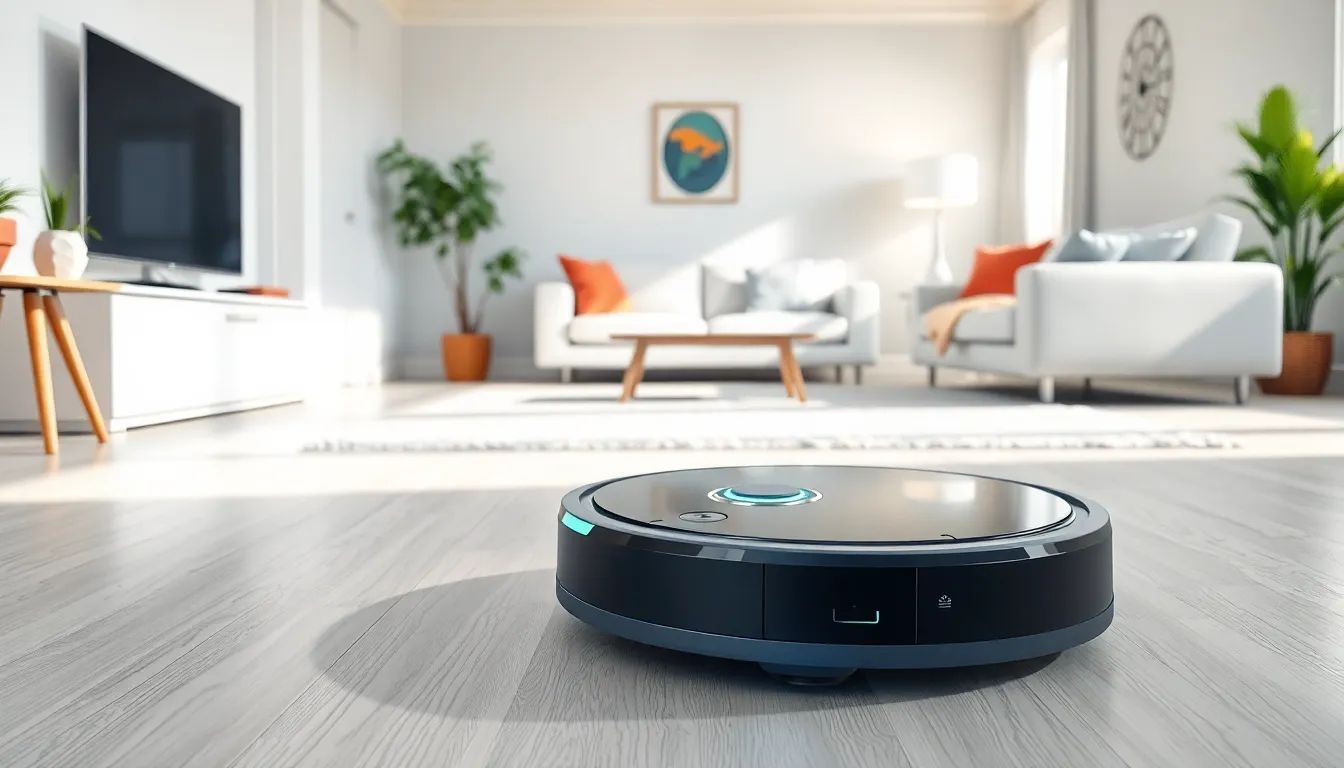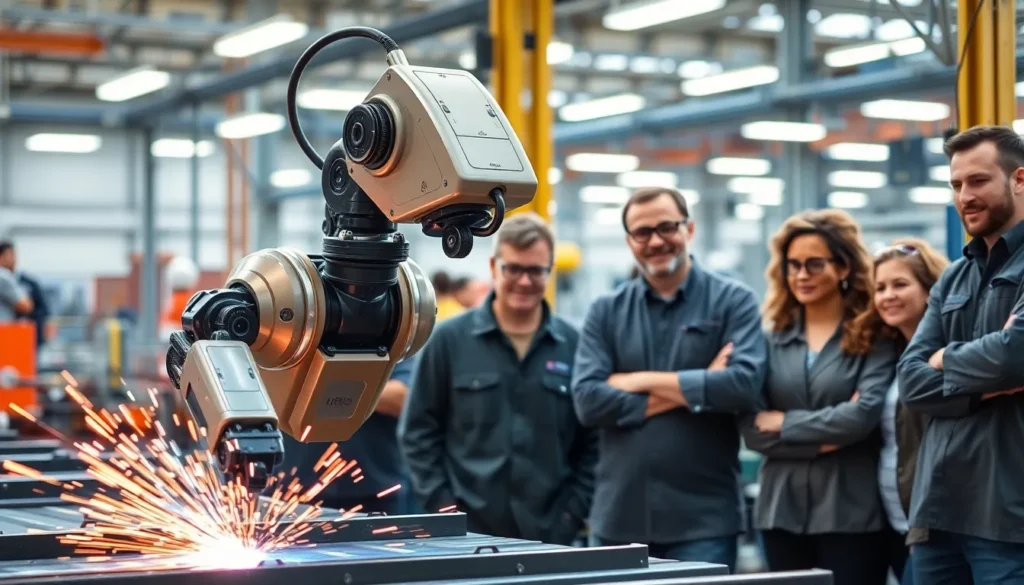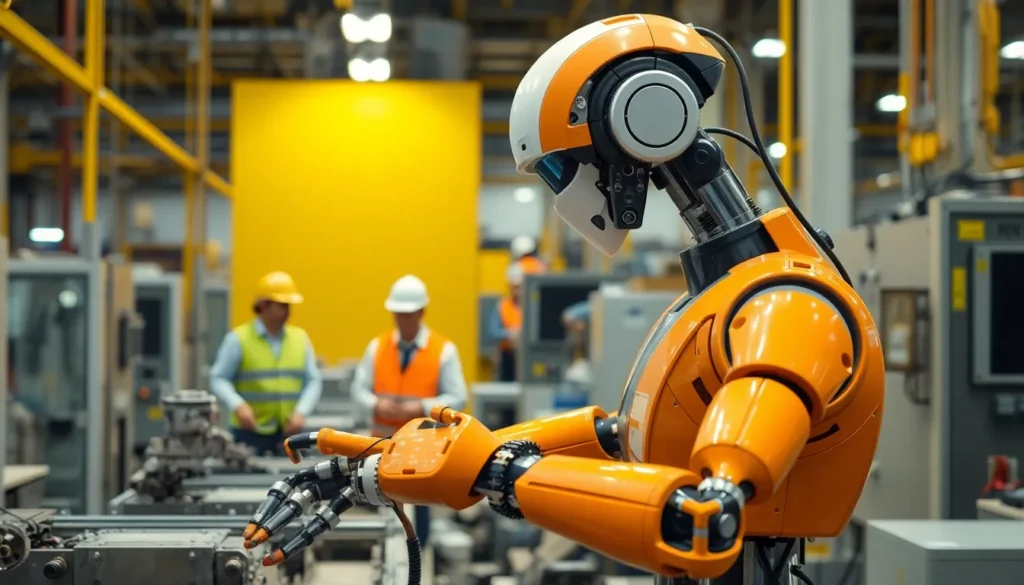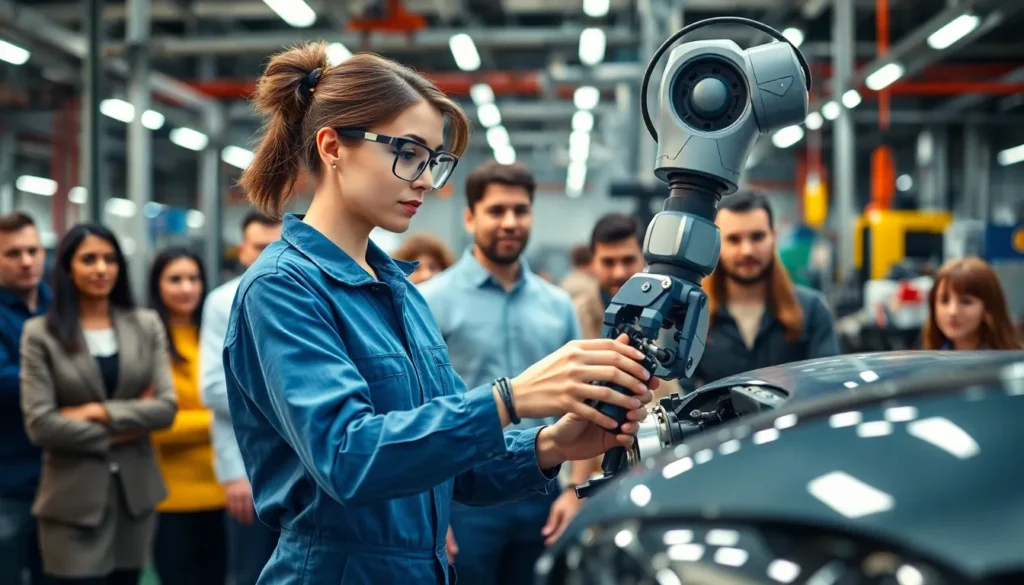Robotics is no longer just the stuff of sci-fi movies. Today, robots are buzzing around in factories, delivering packages, and even flipping burgers. From the quirky robot vacuum that dodges furniture like a pro to industrial arms assembling cars faster than a caffeinated assembly line worker, the world of robotics is both fascinating and practical.
Imagine a world where robots handle tedious tasks while humans focus on creativity and innovation. Sounds dreamy, right? Well, it’s happening now. In this article, we’ll explore some of the most intriguing examples of robotics in action. Get ready to meet the robots that are changing our lives, one task at a time, and maybe even make you chuckle along the way. Who knew technology could be so entertaining?
Robotics Examples
Industrial robots play a key role in manufacturing and assembly processes, increasing efficiency and precision. Various types of robots are utilized to meet diverse industrial needs.
Manufacturing Robots
Manufacturing robots automate tasks such as welding, painting, and material handling. These robots enhance production speed while maintaining high quality. For instance, the use of articulated robots allows for complex movements, making them ideal for precise operations like machining or assembly. According to a report by the International Federation of Robotics, global sales of manufacturing robots increased by 12% in 2021, highlighting their growing importance in the industry.
Assembly Line Robots
Assembly line robots streamline the assembly process in factories. They perform repetitive tasks with high accuracy, significantly reducing errors. Robots such as delta robots suit tasks that require high speed and precision, like picking and placing components on assembly lines. Studies show that implementing assembly line robotics can increase production rates by up to 30%, proving the effectiveness of these machines in enhancing operational efficiency.
Service Robotics Examples

Service robotics exemplifies how robots enhance daily life across various sectors, including cleaning and healthcare.
Cleaning Robots
Cleaning robots actively simplify household chores. Robot vacuums like Roomba effectively navigate spaces, removing dust and debris with minimal human intervention. Reports show that 30% of households use robotic cleaners, highlighting their growing popularity. In addition to vacuums, window-cleaning robots and floor mopping machines assist in maintaining cleanliness. Manufacturers design these machines for optimal efficiency, allowing users to focus on other tasks while enjoying cleaner environments.
Healthcare Robots
Healthcare robots transform patient care and enhance operational efficiency in medical settings. Robotic surgical systems, such as the da Vinci Surgical System, allow surgeons to perform complex procedures with precision. It’s estimated that these systems increase recovery times by 20%. Additionally, telepresence robots enable healthcare professionals to consult with patients remotely, improving access to care. These robots not only assist with administrative tasks but also support rehabilitation, showcasing their versatility in healthcare environments.
Educational Robotics Examples
Educational robotics fosters creativity and problem-solving skills among students. Engaging with robots not only teaches coding but also provides hands-on experience.
Teaching Aids
Many classrooms utilize robotics as teaching aids to enhance learning experiences. Robots like Bee-Bots or LEGO Mindstorms introduce students to programming concepts through interactive play. Utilizing these tools promotes collaboration, creativity, and critical thinking. Teachers report increased student engagement and interest in STEM subjects through robotics use. Moreover, studies indicate that students exposed to educational robotics exhibit a 20% improvement in problem-solving skills.
Robotics Competitions
Robotics competitions provide students with opportunities to apply their knowledge in real-world scenarios. Events such as FIRST Robotics and VEX Robotics Challenge motivate students to design, build, and program robots for specific tasks. Participants showcase teamwork and innovation while gaining valuable experience in engineering and programming disciplines. Statistically, involvement in these competitions correlates with a 25% increase in student interest in pursuing STEM careers. Educators recognize these competitions not only enhance technical skills but also develop soft skills like communication and teamwork.
Entertainment Robotics Examples
Entertainment robotics showcases how technology enhances leisure activities, making experiences more interactive and enjoyable.
Robotics in Movies
Robots have long captured imaginations in cinema. Iconic characters like R2-D2 and Wall-E portray the potential for robotic companions in storytelling. In the 2021 film “Free Guy,” a simulated environment features bots that enrich gameplay, illustrating how robotics influences cinematic narratives. Robots in film inspire audiences and shape cultural perceptions of technology. They also contribute to box office success, as many viewers seek thrilling adventures involving robots or AI. With advancements in visual effects, filmmakers create increasingly realistic robots, blurring the line between reality and fiction.
Robotic Toys
Robotic toys provide engaging ways for children to learn and play. Popular options like Cozmo and Sphero encourage creativity and critical thinking through interactive programming. Data indicates that 35% of parents consider robotics toys essential for STEM education, reflecting their educational value. These toys foster a hands-on approach, allowing kids to experiment with coding while having fun. In addition, competitions like the Robot Contest attract young enthusiasts, promoting teamwork and innovation. This emerging segment combines play with learning, making it a vital resource for developing future tech skills.
Conclusion
Robotics is undeniably reshaping various aspects of daily life. From enhancing manufacturing efficiency to transforming healthcare and education, robots are becoming integral to modern society. Their ability to automate tasks not only boosts productivity but also allows individuals to focus on more creative endeavors.
As technology continues to advance, the potential for robotics will only expand. The influence of robots in entertainment and education further demonstrates their versatility and importance. Embracing these innovations will pave the way for a future where humans and robots collaborate seamlessly, leading to exciting possibilities and improved quality of life.



